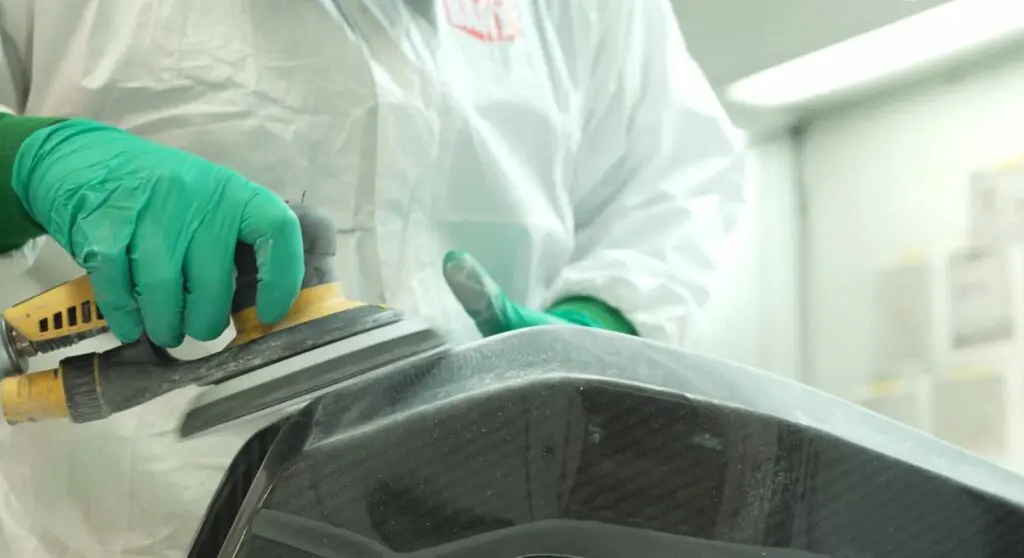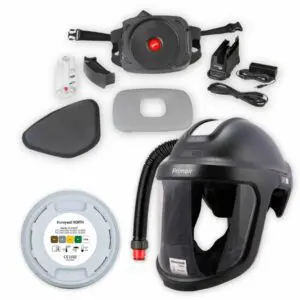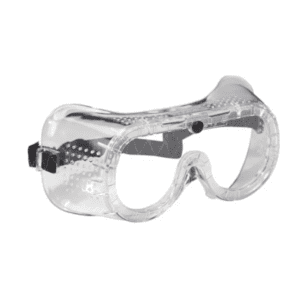
As carbon fibre becomes more popular as a lightweight and durable product, more individuals are beginning to work a lot more with the material. Many are adhering to necessary safety protocols by wearing protective gear. However, there is still a significant portion of the workforce that remain vulnerable due to inadequate safety measures.
This article will discuss what kind of precautions should be taken when working with the material.
Suitable Filtration for Carbon Fibre Dust
Implementing suitable extraction and filtration systems is crucial when working with carbon fibre. On-tool extraction stands out as one of the most efficient methods for removing dust, significantly reducing operator risk. Its immediacy to the source ensures effective removal before dust becomes airborne, making it a vital safety feature.
On Tool Extraction
If you’re only going to provide one kind of extraction method for your workforce, it should be on tool extraction. It’s one of the most effective and efficient methods of removing dust and can dramatically reduce risk to operators. We consider it to be an essential safety feature for any operator that is working with carbon fibre.
What makes on tool extraction so good is that the extraction happens extremely close to where the dust is being created. This means that the vast majority of it is removed and out of harm’s way before it becomes airborne and enters the atmosphere of your workshop. It’s clean, it’s efficient, and it’s reasonably inexpensive.
Centralised Solutions
Centralised extraction systems are cost-effective and highly efficient, making them a standard choice for many workshops. While not specifically tailored to carbon fibre dust, their ability to handle various particulates makes them a viable option for maintaining a clean and safe working environment.
ATEX Compliant Filters
When filtering carbon fibre particulate, utilising ATEX compliant filters is imperative, especially with potentially flammable resins. These filters are designed to minimise ignition risks from static electricity, offering enhanced safety without significant cost differences.

Downdraft Benches
Downdraft benches, though very popular, may not have as effective results as an on-tool extraction. Ideally, combining both methods will maximise the extraction effectiveness. However, if this isn’t feasible, prioritising on-tool extraction is recommended.
Appropriate Clothing
If you utilise all (or most) of the extraction systems above you should be able to remove a huge amount of the particulate created by working with carbon fibre before it becomes into contact with operators. However, even a small amount of carbon fibre dust can become an issue, so appropriate clothing must be worn.
Appropriate Respiratory Protection, Skin Protection, Eye Protection to combat carbon fibre dust
Despite effective extraction systems, wearing appropriate protective clothing is still an essential requirement. Respiratory protection is paramount due to potential health risks, especially considering the introduction of new resins with uncertain safety profiles. Skin protection, through heavy-duty gloves and barrier creams, along with eye protection, further reduces the risks associated with handling carbon fibre.
-
 Honeywell North Primair PA700 Series ABEK1P3 Powered Air Purifying Respirator (PAPR) Starter Kit£1,162.80 Incl. VAT£969.00 Excl. VAT
Honeywell North Primair PA700 Series ABEK1P3 Powered Air Purifying Respirator (PAPR) Starter Kit£1,162.80 Incl. VAT£969.00 Excl. VAT -
 BAXT CHEMSHIELD Green Nitrile Glove (100)£26.34 Incl. VAT£21.95 Excl. VAT
BAXT CHEMSHIELD Green Nitrile Glove (100)£26.34 Incl. VAT£21.95 Excl. VAT -
 Safety Goggles£4.57 Incl. VAT£3.81 Excl. VAT
Safety Goggles£4.57 Incl. VAT£3.81 Excl. VAT
Conclusion
These safety precautions provide a foundational understanding of handling carbon fibre responsibly. For further guidance, reach out to our knowledgeable sales team for personalised recommendations tailored to your organisation’s needs.




